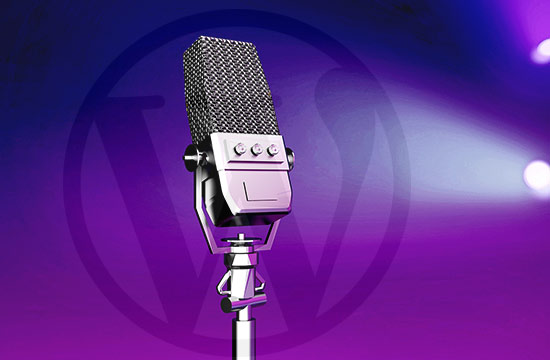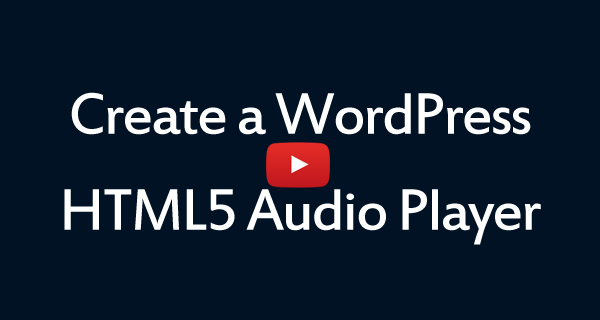A Flutter plugin to play multiple simultaneously audio files, works for Android, iOS, macOS and web.
Contributing #
We now have new rules for contributing!
All help is appreciated but if you have questions, bug reports, issues, feature requests, pull requests, etc, please first refer to our Contributing Guide.
Also, as always, please give us a star to help!
Audio Plugin Player a lightweight host for your VST and AU instrument & effect plugins: version 1.3.1. The jQuery HTML5 Audio / Video Library. JPlayer is the completely free and open source media library written in JavaScript. A jQuery plugin, (and now a Zepto plugin,) jPlayer allows you to rapidly weave cross platform audio and video into your web pages. MP3 Music Player by Sonaar is a powerful MP3 Player for WordPress. It gives you the ability to show a stunning visual MP3 Player on any of your pages, organize your music albums, create playlists and set your tracks into WordPress. The plugin uses wavesurfer.js which allows you to showcase a waveform bar with your audio player that shows audio progress in real-time. However, as of now, it only supports MP3 and M4A formats.
Support us #
You can support us by becoming a patron on Patreon, any support is much appreciated.

Feature Parity Table #
Not all features are available on all platforms. Click here to see a table relating what features can be used on each target.
Feel free to use it for ideas for possible PRs and contributions you can help with on our roadmap! If you are submiting a PR, don't forget to update the table.
Usage #
An AudioPlayer instance can play a single audio at a time. To create it, simply call the constructor:
To use the low latency API, better for gaming sounds, use:
In this mode the backend won't fire any duration or position updates.Also, it is not possible to use the seek method to set the audio a specific position.This mode is also not available on web.
You can create multiple instances to play audio simultaneously.
For all methods that return a Future<int>: that's the status of the operation. If 1, the operation was successful. Otherwise, it's the platform native error code. Orwell: keeping an eye on you download free.
Logs are disable by default! To debug, run:
Playing Audio #
There are four possible sources of audio:
- Remote file on the Internet
- Local file on the user's device
- Local asset from your Flutter project
- Audio in the form of a byte array (in Flutter, Uint8List)
Both for Remote Files or Local Files, use the play method, just setting appropriately the flag isLocal.
For Local Assets, you have to use the AudioCache class (see below).
Audio Player Plugin Codecanyon
To play a Remote File, just call play with the url (the isLocal parameter is false by default):
If you want to play audio for a long period of time, you need to set appropriately the flag stayAwake,If you pass stayAwake as true you need to add this permission to your app manifest:<uses-permission android:name='android.permission.WAKE_LOCK' />.
For a Local File, add the isLocal parameter:
To play a file in the form of a data buffer (Uint8List), use the method playBytes.This currently only works for Android (requiring API >= 23, be sure to handle that if you use this method on your code).
The isLocal flag is required only because iOS and macOS make a difference about it (Android doesn't care either way).
There is also an optional named double volume parameter, that defaults to 1.0. It can go from 0.0 (mute) to 1.0 (max), varying linearly.
The volume can also be changed at any time using the setVolume method. Gremlins, inc. – automated competitors download.
Controlling #
Note: these features are not implemented in web yet.
After playing, you can control the audio with pause, stop and seek commands.
Pause will pause the audio but keep the cursor where it was. Subsequently calling play will resume from this point.
Stop will stop the audio and reset the cursor. Subsequently calling play will resume from the beginning.
Finally, use seek to jump through your audio:
Also, you can resume (like play, but without new parameters):
Finer Control #
By default, the player will be release once the playback is finished or the stop method is called.
This is because on Android, a MediaPlayer instance can be quite resource-heavy, and keep it unreleased would cause performance issues if you play lots of different audios.
On iOS and macOS this doesn't apply, so release does nothing.
You can change the Release Mode to determine the actual behavior of the MediaPlayer once finished/stopped. There are three options: Coloring pixels - spring pack download free.
- RELEASE: default mode, will release after stop/completed.
- STOP: will never release; calling play should be faster.
- LOOP: will never release; after completed, it will start playing again on loop.
If you are not on RELEASE mode, you should call the release method yourself; for example:
Despite the complex state diagram of Android's MediaPlayer, an AudioPlayer instance should never have an invalid state. Even if it's released, if resume is called, the data will be fetch again.
Stream routing
You can choose between speakers and earpiece. By default using speakers.Toggle between speakers and earpiece.
Streams #
Note: streams are not available on web yet.
The AudioPlayer supports subscribing to events like so:
Duration Event
This event returns the duration of the file, when it's available (it might take a while because it's being downloaded or buffered).
Position Event
This Event updates the current position of the audio. You can use it to make a progress bar, for instance.
State Event
This Event returns the current player state. You can use it to show if player playing, or stopped, or paused.
Completion Event
This Event is called when the audio finishes playing; it's used in the loop method, for instance.
It does not fire when you interrupt the audio with pause or stop.
Error Event
This is called when an unexpected error is thrown in the native code.
AudioCache #
In order to play Local Assets, you must use the AudioCache class. AudioCache is not available for Flutter Web.

Flutter does not provide an easy way to play audio on your assets, but this class helps a lot. It actually copies the asset to a temporary folder in the device, where it is then played as a Local File.
It works as a cache because it keeps track of the copied files so that you can replay them without delay.
You can find the full documentation for this class here.
playerId #
By default, each time you initialize a new instance of AudioPlayer a unique playerId is generated and assigned using uuid package, this is designed this way to play multiple audio files simultaneously, if you want to play using the same instance that was created before simply pass your playerId when creating a new AudioPlayer instance.
Supported Formats #
You can check a list of supported formats below:
- web: audio formats supported by the browser you are using (more details)
⚠️ iOS & macOS App Transport Security #
By default iOS and macOS forbid loading from non-https url. To cancel this restriction on iOS or macOS you must edit your .plist and add:
⚠️ macOS Outgoing Connections #
By default, Flutter macOS apps don't allow outgoing connections, so playing audio files/streams from the internet won't work. To fix this, add the following to the .entitlements files for your app:
Audio Plugin Player 1.3.1

Windows Media Player Video Plugins
Note: On Android by default, there is a restriction not allowing traffic from HTTP resources. There is a fix for this and it requiresadding android:usesCleartextTraffic='true' within your AndroidManifest.xml file located in android/app/src/main/AndroidManifest.xml.
Here is an example of how it should look like:
Android Support #
Giving support to old Android devices is very hard, on this plugin we set the minSdk as 16, but we only ensure support >= 23 as that is the minimum version that the team has devices available to test changes and new features.
This mean that, Audioplayer should work on older devices, but we can't give any guarantees, we will not be able to look after issues regarding API < 23. But we would glady take any pull requests from the community that fixes or improve support on those old versions.
Credits #
This was originally a fork of rxlabz's audioplayer, but since we have diverged and added more features.
Thanks for @rxlabz for the amazing work!
Build in javascript with jQuery, used Radio streams directly from Icecast Server and play in HTML5 audio element.

ABOUT
This Icecast radio player plugin is a powerful and responsive radio player for your website, it runs on all major browsers and mobile devices like iPhone, iPad, IOS, Android, Windows mobile or desktop. Packed with huge amount of features like, 7 various audio spectrum visualizer, 2 different userinterfaces, customizable colors, customizable fonts, customizable sizes, optimized for touch, Artist -Songtitle, Coverimage, external API and much more.
Please make sure use latest versions of radio server like Icecast V2!
WHAT IS ICECAST?
Icecast is a streaming media project released as free software maintained by the Xiph.org Foundation. It also refers specifically to the server program which is part of the project. Icecast was created in December 1998/January 1999 by Jack Moffitt and Barath Raghavan to provide an open-source audio streaming server that anyone could modify, use, and tinker with. Version 2, a ground-up rewrite aimed at multi-format support (initially targeting Ogg Vorbis) and scalability, was started in 2001 and released in January 2004.
SUPPORTED STREAMING SERVER TYPES
This servers are supported by the Luna Radio Player Plugin
